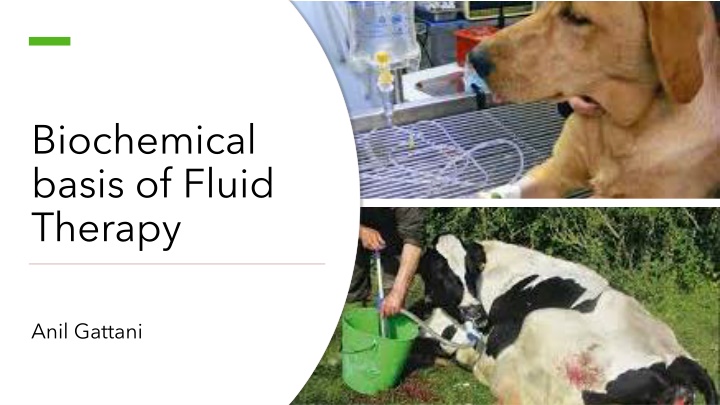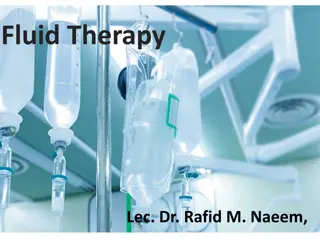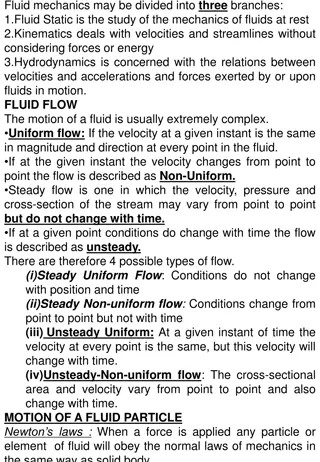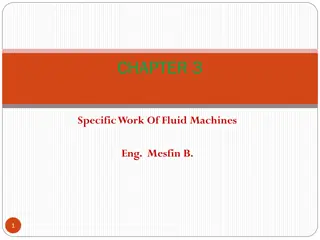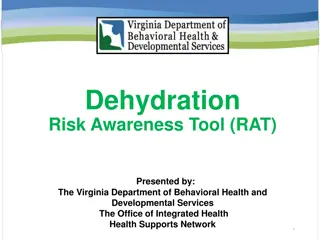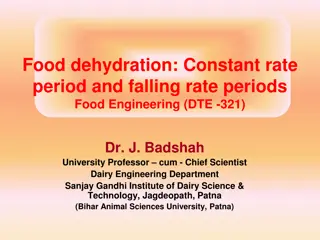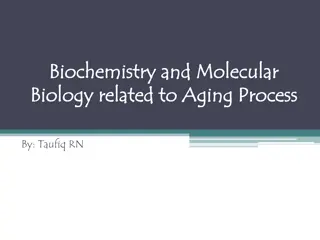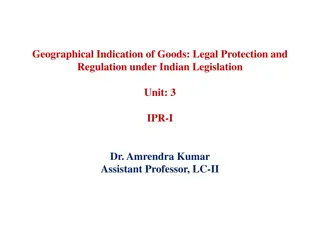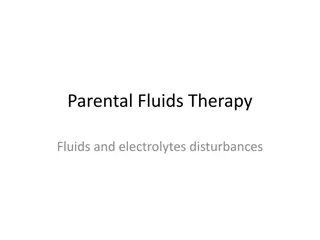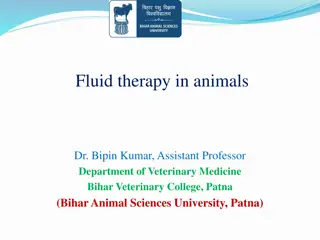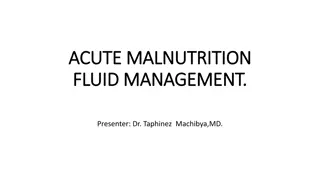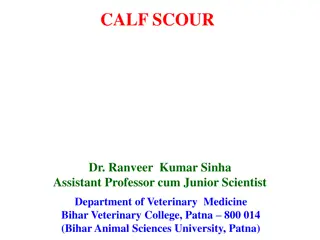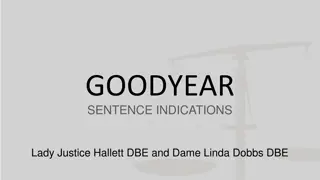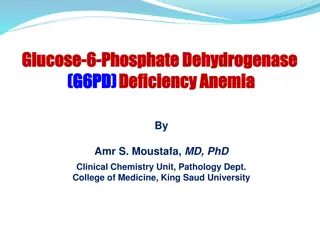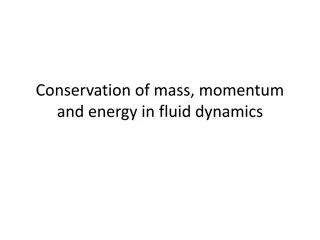Biochemical Basis of Fluid Therapy and Dehydration Indications
The biochemical basis of fluid therapy by Anil Gattani, including indications for dehydration treatment, types of dehydration, causes, roles of electrolytes and carbohydrate metabolism, water replacement guidelines, and replacement volume calculations.
Download Presentation

Please find below an Image/Link to download the presentation.
The content on the website is provided AS IS for your information and personal use only. It may not be sold, licensed, or shared on other websites without obtaining consent from the author.If you encounter any issues during the download, it is possible that the publisher has removed the file from their server.
You are allowed to download the files provided on this website for personal or commercial use, subject to the condition that they are used lawfully. All files are the property of their respective owners.
The content on the website is provided AS IS for your information and personal use only. It may not be sold, licensed, or shared on other websites without obtaining consent from the author.
E N D
Presentation Transcript
Biochemical basis of Fluid Therapy Anil Gattani
Indication of Fluid therapy instituted for the following conditions Dehydration- loss of skin elasticity, dry buccal mucosa and tongue, and sunken eyeballs Acid base disturbances - vomiting, diarrhea, abnormal respiratory pattern, and CNS abnormality Electrolyte imbalances- Blood gas and urine analyses Nutritional problems Loss of body fluids- burn, haemorrhage,
Dehydration Hypertonic dehydration- loss of pure water or hypotonic fluid Isotonic dehydration - loss of isotonic body fluids (in acute case), Hypotonic dehydration - loss of a hypertonic fluid or loss of isotonic fluid with water replacement
Causes of dehydaration Decreases in water intake Lack of water source, Disorders and pain of the buccal cavity and pharynx, CNS disturbances Increases in body fluid excretion Polyuria, Profuse sweating, Vomiting/diarrhea, Respiratory loss
Role of electrolytes on hydration states and acid base balance [Na+] in ECF water retention [K+] in plasma [K+], [H+] in urine Acidemia [K+] in plasma [K+], [H+] in urine Alkalemia
Role of carbohydrate metabolism on hydration states and acid base balance Carbohydrate utilization Hyperglycemia Glucosuria Polyuria Dehydration Carbohydrate utilization Gluconeogenesis Ketoacidosis Carbohydrate intake (grain overload) in herbivores Lactic acid production Acidosis
WATER REPLACEMENT Amount of fluid therapy = body water maintenance + replacement of the deficit + ongoing loss Maintenance water= 50 75 mL/kg/day (Average 65) Ongoing loss- vomiting, diarrhoea, etc
Replacement volume (L) = %dehydration body weight (kg) 4% dehydration- No replacement replacement of the deficit 6% - decreased skin turgor, dull haircoat and dry mucous membranes 8-10% - skin lacks pliability, Dry mucous membranes and tongue, Soft eyeballs that are sunken into the orbit, Cold extremities, Capillary refill time >3 seconds 12 %- All the signs seen with 8 10%, Circulatory collapse (shock)
composition of replacement fluid similar to the volume of fluid lost E.g. if loss of the electrolyte-rich GI fluid, then fluid should contain Na+, K+, Ca2+, Cl , and HCO3 agents) In pure loss of water- 5% dextrose (glucose in water) or 2.5% dextrose and 0.45% NaCl over 24 72 hours (or indirect alkalinizing
Other factors Dehydration affects young animals much faster than adult Old animals with chronic diseases require more water than younger Physical and weather conditions may affect the requirement Drugs will alter requirements, particularly diuretics and mineralocorticoids
Calculation of mOsm/L from mM For electrolyte solutions Since NaCl dissociates into two particles, Na+and Cl , 1 mmol/L (1 mmolar or 1 mM) of NaCl solution yields 2 mOsm/L 1mmol of NaCl contains 58.5 mg For nonelectrolyte solutions glucose does not dissociate, 1 mM of glucose solution yields 1 mOsm/L
